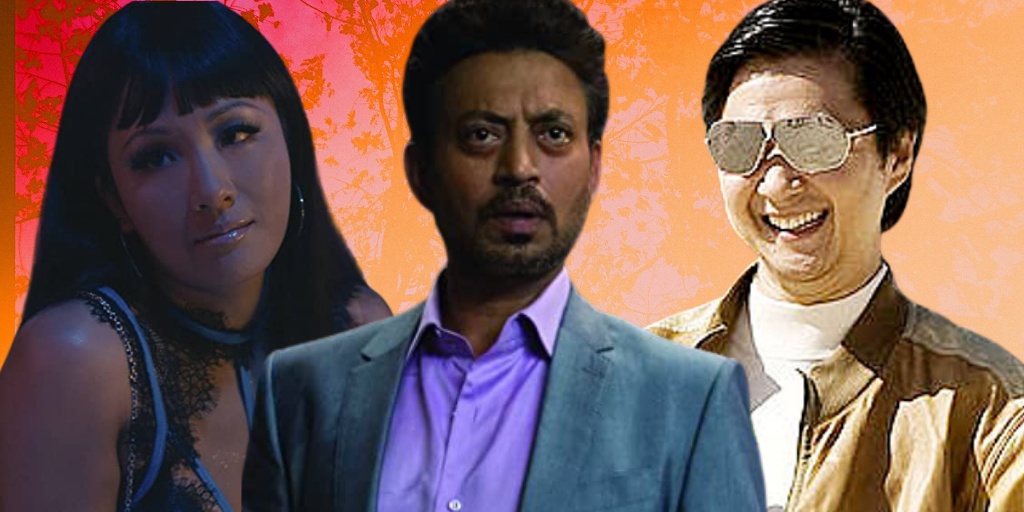Last week, USC Annenberg Inclusion Initiative and researchers Dr. Nancy Wang Yuen, Dr. Stacy L. Smith, Dr. Katherine Pieper, Marc Choueiti, Kevin Yao and Dana Dinh released a comprehensive study of Asian representation in film. The study, The Prevalence and Portrayal of Asian and Pacific Islanders across 1,300 Popular Films, gave a stark look at how Asian and Pacific Islander (referred to from now on as “API” as it is in the study) are underutilized, discriminated against, and violently objectified in movies.
After reading the study, I’ve pulled out five of the various points for further analysis and elaboration. But overall, the study’s takeaway is this: don’t let the social media chatter about the increasing Asian representation fool you into believing the problem is over. Far from it: Indeed, there’s still a lot of inequity in Hollywood when it comes to API actors and characters.
API women are grossly underrepresented and hypersexualized
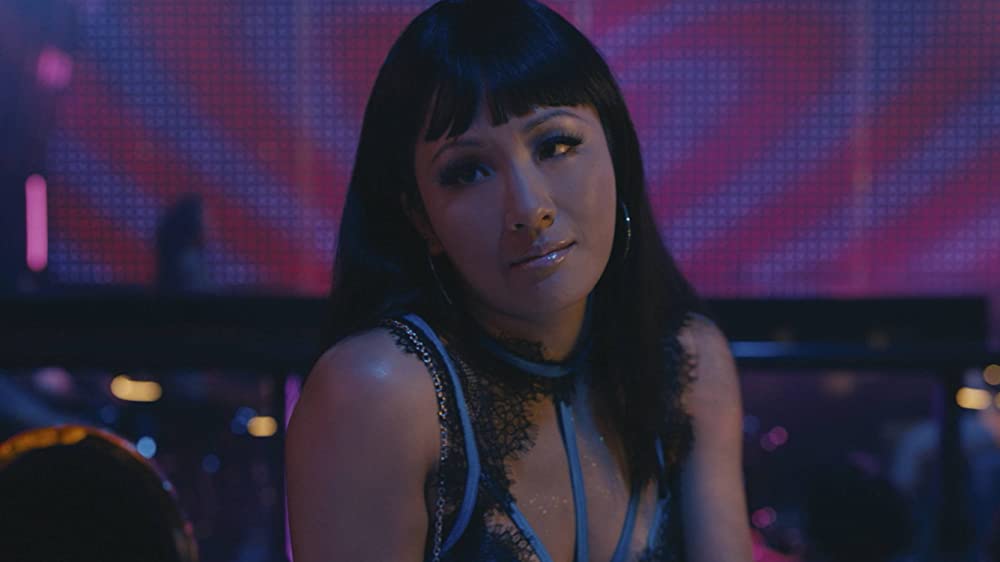
Across 1,300 of the highest-grossing films between 2007 and 2019 analyzed for the study, only 44 of those films had a lead or co-lead who was API. Percentage-wise, that means only 3.4 percent of leads or co-leads were API. Even worse, only six of those actors were female: Constance Wu, Auli’i Cravalho, Hailee Steinfeld and Chloe Bennet. Meanwhile, 336 white actors had starring roles. In other words, for every 84 white men cast in starring roles, only one API woman was cast in a similar role.
When API women are cast in films, starring or otherwise, they are often cast in roles lacking romantic relationships, but not nearly as often as API men (more on that later). Wildly enough, though, API female characters (including girls) are also more likely to be shown wearing sexually provocative clothing or partially nude, with the focus specifically being on the characters’ looks. In fact, the study states that API female characters are more often referenced as being attractive compared to API men and boys in films.
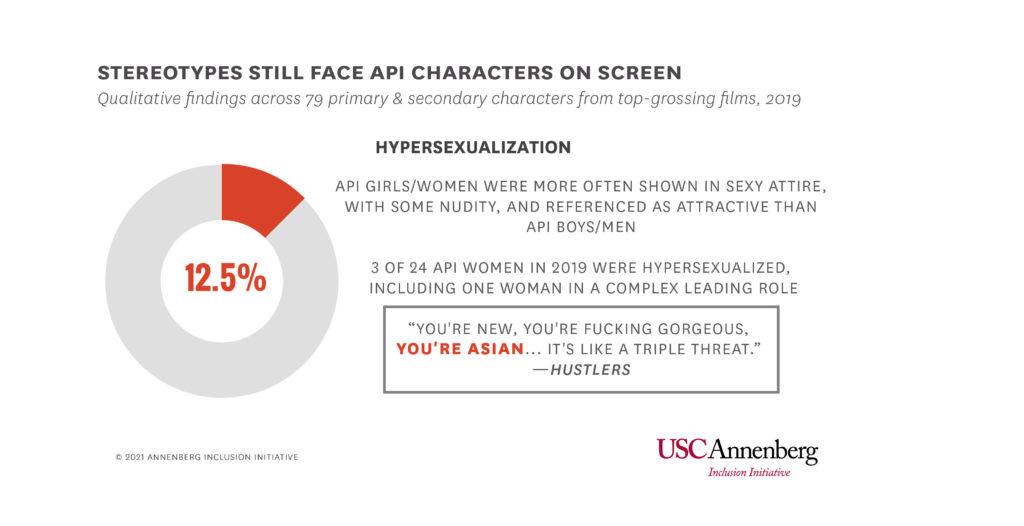
In films between 2007 to 2018, API female characters were shown in sexy attire 23.3 percent of the time compared to seven percent of API male characters. API female characters were also presented in some type of nudity 21.3 percent of the time compared to 9.3 percent of API male characters, and API female characters were called or referenced as being attractive 8.2 percent, compared to 2.3 percent of API male characters.
Hypersexualization of API women and girls is an important note in this study, seeing how API women and girls face heightened violence based on sexual and gender stereotypes. As we just saw in March, in which eight Asian women were killed in a hate crime in Atlanta, the women were initially called “sexual temptations” by the district attorney, a direct correlation to stereotypes about Asian women and sexual exploitation.
Severe lack of equal representation of API communities
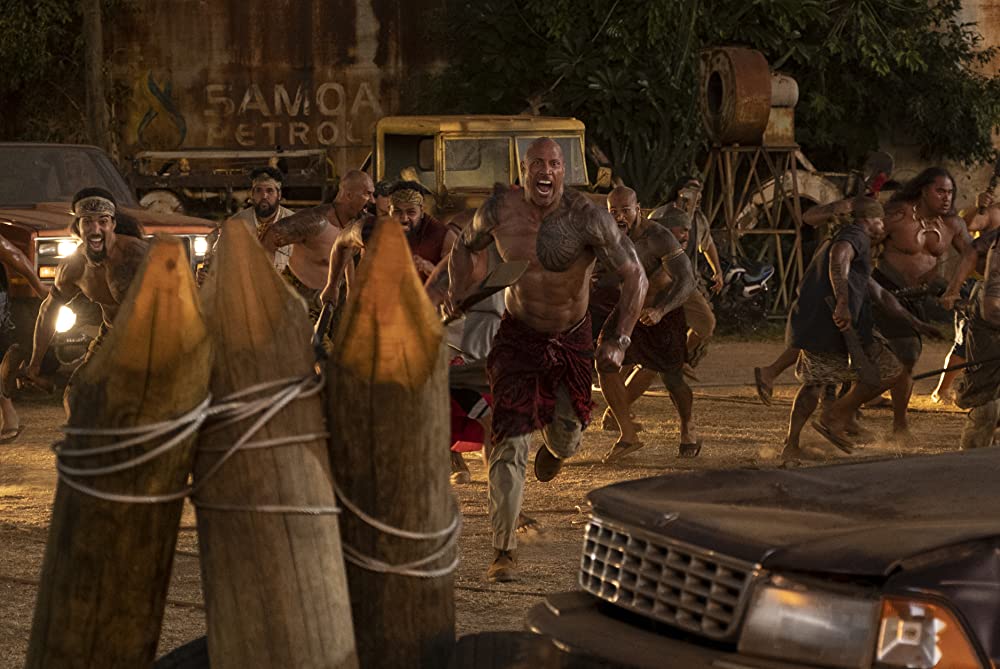
In America, “Asian” seems to be synonymous with “Chinese” or “East Asian,” which has led to casting that has prioritized East Asian diasporic actors over other members of the API spectrum. The study finds that 65.4 percent of actors across 200 films between 2018 and 2019 were East Asian, compared to 17.4 percent of South Asian actors, 13.3 percent of Southeast Asian actors and 6.5 percent of Polynesian actors. Most API actors who were cast as leads or co-leads across the 1,300 films between 2007 and 2019 were East Asian–45.5 percent, compared to the 36.4 percent of South Asian actors, 9.1 percent of Southeast Asian actors and 18.2 percent of Polynesian actors.
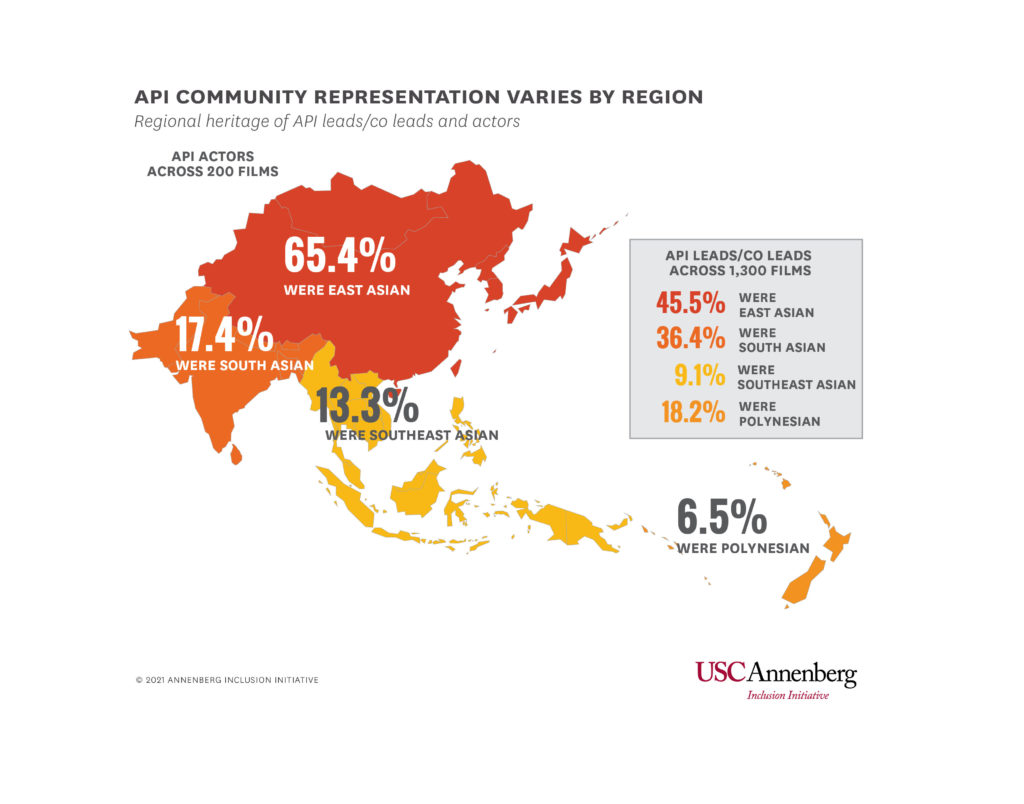
More specifically, within the 200 films analyzed for ethnic breakdown, Chinese actors topped the list at 185 actors represented or 36.3 percent. Indian, Korean and Japanese were the next highest at 81 (15.9 percent), 81 (15.9 percent), 80 (15.7 percent) and 78 (15.3 percent), respectively. Southeast Asian and Pacific Islander communities are the least represented, with Filipino actors topping the Southeast Asian/Pacific Islander representation at 31 actors (6.1 percent).
The East Asian vs. Southeast Asian representation discussions have been looming large on social media, with film and TV viewers demanding for casting directors and studios to stop thinking that Asian representation only encapsulates East Asian characters and actors. The conversation also extends to reminding East Asian American activists to include Southeast Asian and Polynesian people in their activism.
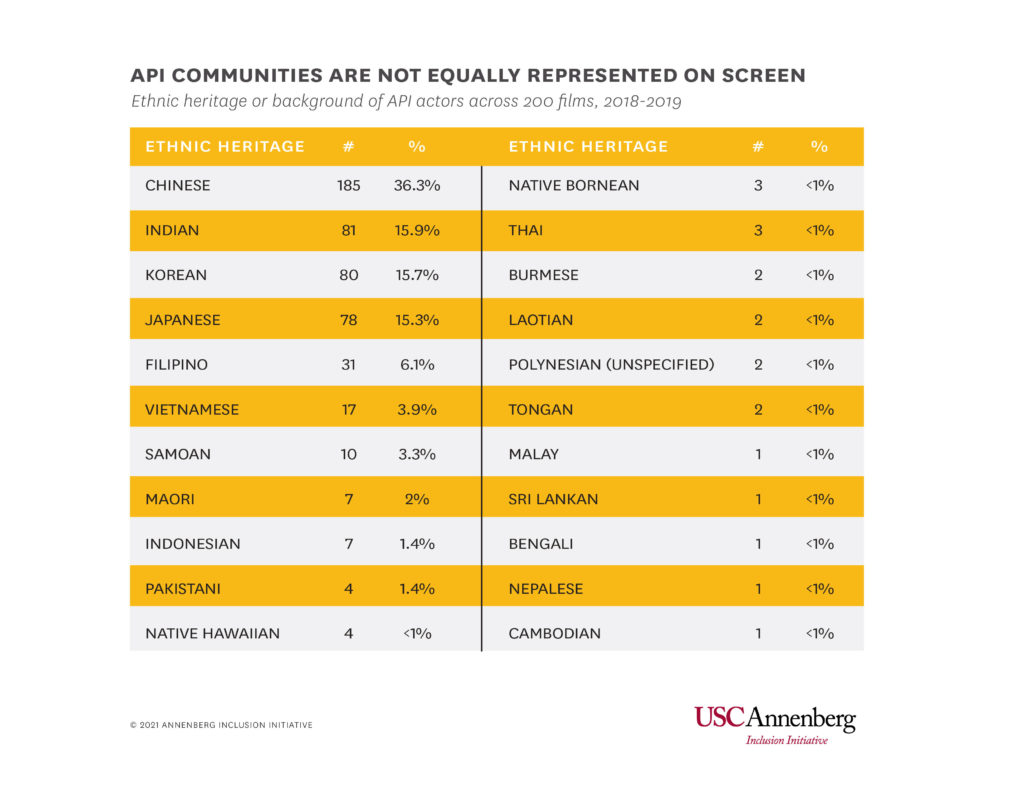
More API representation needs to be in behind-the-scenes and executive positions
There aren’t enough API directors, producers and casting directors working in the industry today. According to the data, only 50 directors out of 1,447 directors across 1,300 films between 2007 to 2019 were API. That number comes out to 3.5 percent. Only 98 of the producers–2.5 percent–were API, and only 66 casting directors–3.3 percent–were API. Worse still, out of the 50 directors, only 3 were women, and there hasn’t been an API woman credited as the sole director of a top grossing live action feature film between 2007 and 2019.
However, when there is an API director at the helm, API representation grows quantitatively and qualitatively. With API directors, API speaking characters rise to 21.5 percent versus the 5.4 percent with a non-API director. API leading characters also rise to 14.3 percent with an API director as opposed to the 3 percent under a non-API director. A similar trend is shown when an API casting director is working on a film; API speaking roles increase to 14.3 percent and API leads increase to 4.5 percent, compared to the 5.4 percent of speaking roles and 3.4 percent of API leads under a non-API casting director.
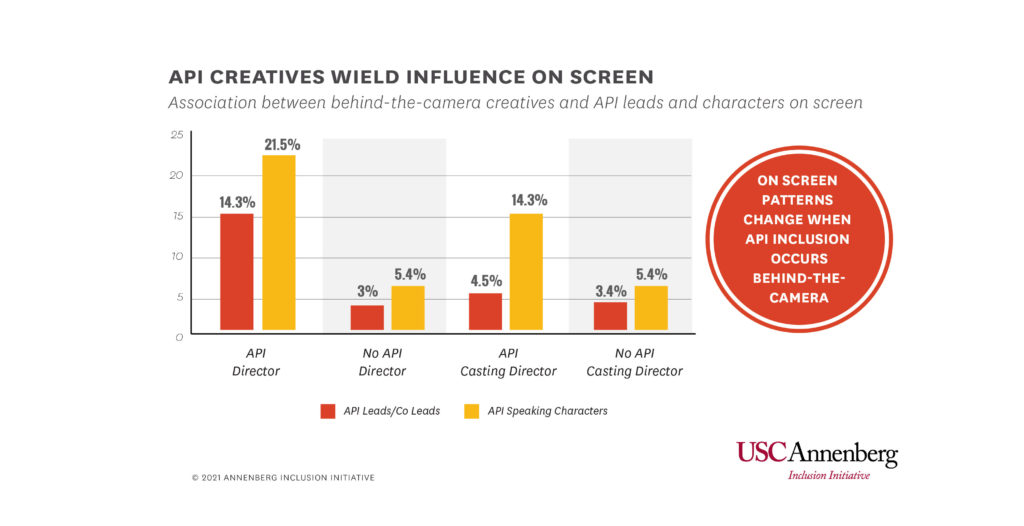
Out of 202 film executives, only 6.4 percent–13– were API, with none at top positions like Chairs or CEOs. Eight of those executives were women, 61.5 percent.
API characters die too often on screen
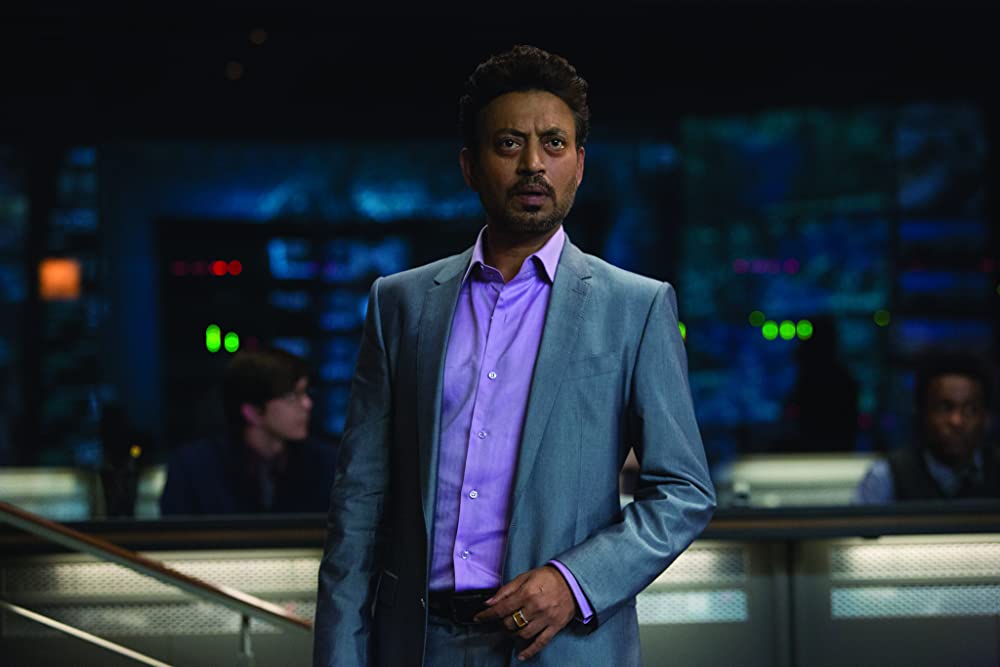
Seeing how we are seeing a severe rise in anti-Asian discrimination and violence, it’s worth noting how film plays a part in seeing API characters as “perpetual foreigners,” people who can be scapegoated for a country’s problems.
Over the 79 primary and secondary API characters in 2019 films, 41.8 percent of characters experienced discrimination and disparagement and 25.3 percent of characters died by the end of the film. The study explicitly states that all but one death ended violently, and six characters were the victim of verbal abuse in the form of racist and sexist slurs.
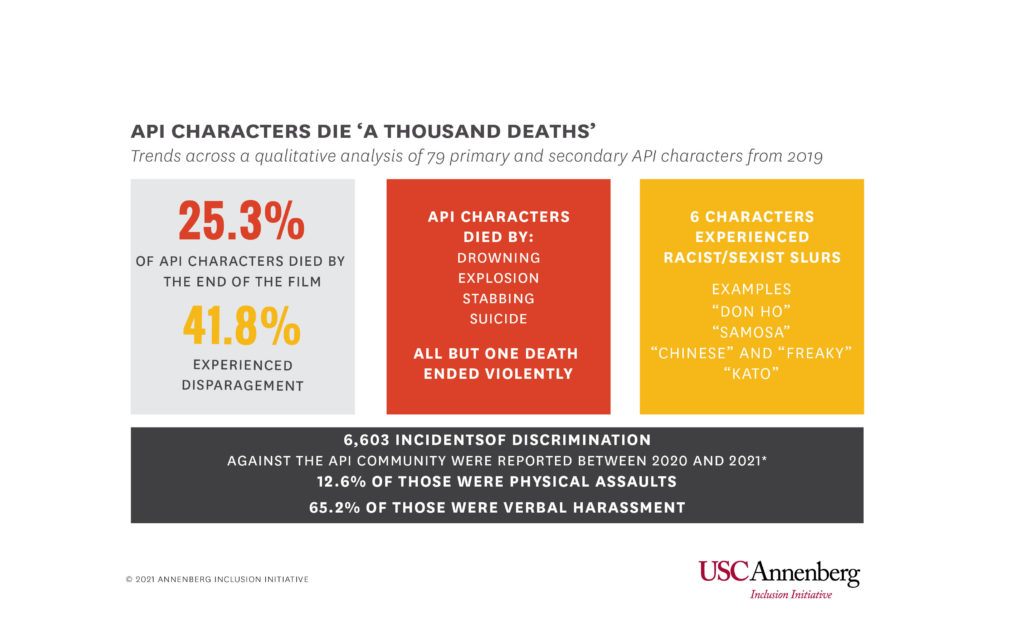
The study puts this trend in context with the amount of anti-Asian hate we’ve seen between 2020 and 2021. There have been 6,603 incidents of discrimination so far, with most of them, 65.2 percent, being incidents of verbal harassment. Physical assaults made up 12.6 percent.
Emasculation is still present in film
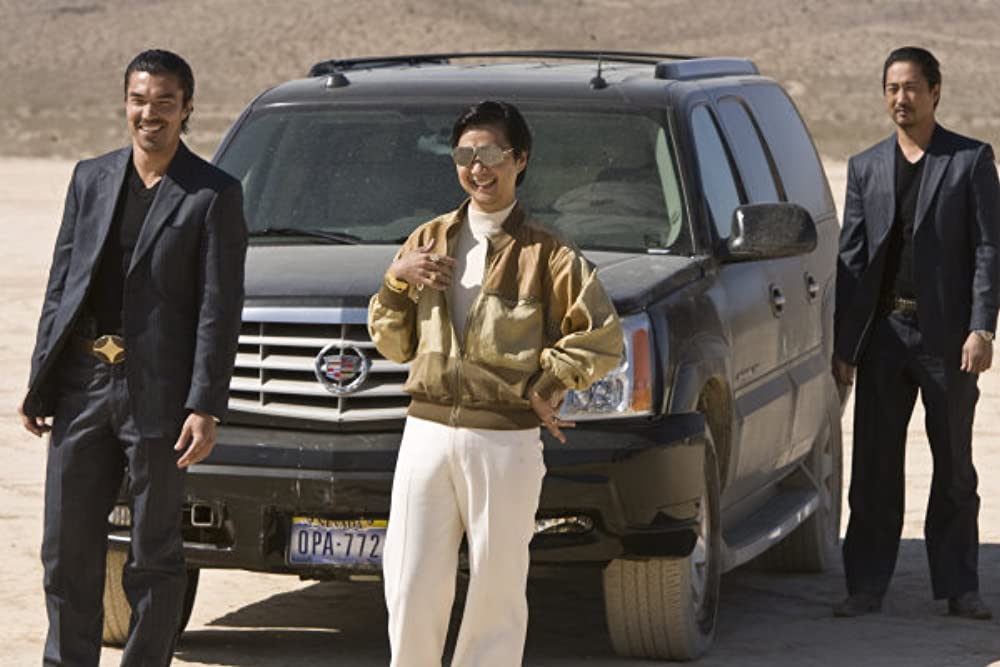
Hypersexuality is a problem facing mostly API women in entertainment and in real life. But API men are facing a different battle–constant emasculation. Compared to the 37.5 percent of API women characters who were positioned in non-romantic relationships, API men are more often depicted without romantic overtones–58 percent. The study specifically notes that one man was specifically told, “No one wants to have sex with you.”
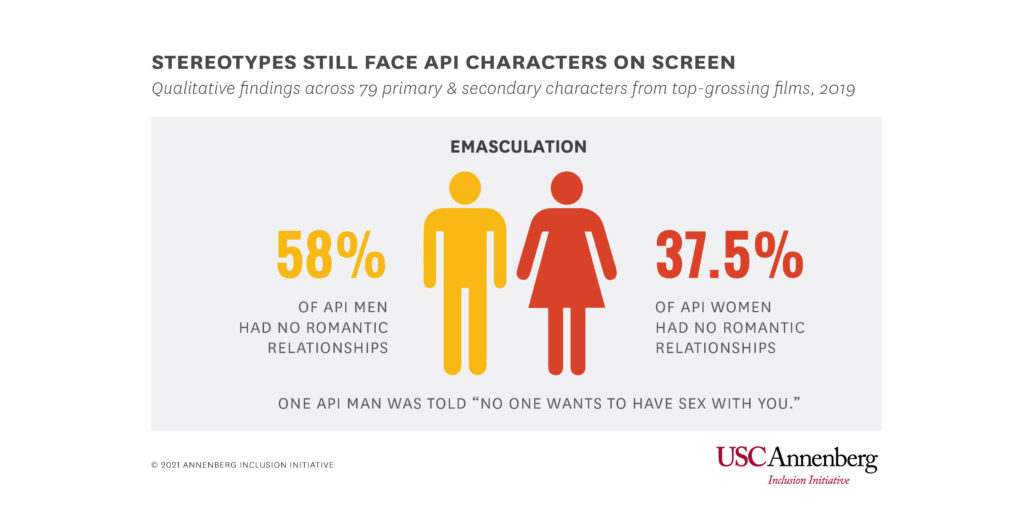
To that end, you might have seen an uptick in Asian male actors flaunting their sexuality. Actors like Simu Liu, Lewis Tan, Yoshi Sudarso, Henry Golding, Andrew Koji, Alexander Hodge, Charles Melton and others are part of a movement of Asian actors showcasing ther sex appeal on social media and talking about what it means to them to be sex symbols in Hollywood. Whether the actors in question are participating in the movement purposefully or indirectly, they are refuting the stereotype that Asian men aren’t desirable.
However, there’s something to be said about learning lessons from the vitriol API women experience from being hypersexualized. While Asian women might be seen as “desirable,” they are also sexually objectified, stereotyped as sexually submissive, and seen as disposable. Currently, many of the Asian male stars engaging in discussions about sexual desirability can show off their bodies without the threat of experiencing the same type of sexual violence because of the male privilege that still exists even for marginalized men. Indeed, sometimes, sexual objectification seems welcomed in some of these actors’ comments sections, or at the very least, tolerated with a laugh.
With the lessons exhibited by Asian women’s plight, then, where does sexual empowerment for Asian men end and indulging in hypersexuality begin? When does defining the Asian male body by Eurocentric body standards have diminishing returns? Can there be true liberation from Hollywood’s sexual stereotyping through self-objectification? How can API actors–and all people of color, for that matter–break out of the confines of Westernized ideals and create sexual and gender empowerment around culturally specific, self-affirming philosophies? These are questions I can’t answer as a Black woman, or don’t currently have the answer to as a person of color in general. But what I can say is that emasculating stereotypes toward Asian men needs to stop just as much as hypersexual stereotypes towards Asian women must stop. Once we can define sexuality by a variety of standards, not just shallow and/or binary Eurocentric ones (i.e. the belief that skinny, toned, and/or muscular bodies are the only ones of value), people of color in general can progress in terms of owning their sexuality for self-empowerment, not just for audience consumption.
You can read the full study, with even more data points, here.
Digesting the data

The stats regarding API representation are sobering. I wrote about the state of Asian representation in the media back in 2016 for my e-book Being Asian in Hollywood, and sadly, a lot of the anecdotal statistics creatives told me in interviews are backed up by the hard data in the study. Things aren’t all doom and gloom though; what’s worth noting is that the study took into account films between 2007 and 2019. In other words, any of the progress that might have happened between 2020 and 2021 isn’t part of the data assessed. What I think we can take from that is that while the large data set proves Hollywood must learn from its past mistakes, some of the new cultural moments happening in media might be indicative of the industry slowly changing for the better.
For instance, let’s take one of the more obvious positives from 2020 and 2021, the announcement of Marvel’s Shang-Chi and the Legend of the Ten Rings. The film is directed by Destin Daniel Cretton, a director of Asian descent, and stars a mostly-Asian cast including Kim’s Convenience‘s Simu Liu, comedian/actor Awkwafina, and acting legend Tony Leung. Similarly with Marvel’s Eternals: Oscar-winning director Chloe Zhao is helming a blockbuster film starring Asian diasporic stars like Kumail Nanjiani, Gemma Chan, Ma Dong-seok, and Harish Patel. A film like Shang-Chi or Eternals seemed like an impossibility even two years ago.
What led to the change? Marvel’s Kevin Feige finally gaining control of the reins to Marvel Studios after Ike Perlmutter, who held the studio back in terms of racial and gender representation, was forced out of his position in 2015 after a string of racist and financial scandals. April Reign’s #OscarsSoWhite hashtag-turned-movement became a watershed moment for Hollywood, and initiatives afterwards, such as actors adding inclusion riders to their contracts, challenged the industry to become more intentionally equitable. Around the same time, William Yu’s #StarringJohnCho viral hashtag and social media movement challenged Hollywood to cast more Asian diasporic actors into starring roles (not just John Cho, despite what the hashtag might lead you to believe). Finally, political and social movements, such as Black Lives Matter, #MeToo, and other racial and gender movements, have moved the needle with everyday people when it comes to accepting and wanting better opportunities for people of color and women (including women of color, specifically). I would wager we are beginning to feel some of the effects of these movements when it comes to API representation in film; in 2019, we were just at the cusp of seeing those movements start changing the game for other people of color.

With that said, the amount of negligence Hollywood has shown between 2007 and 2019 should make industry executives both ashamed and empowered to make changes. The study shows the answers execs need to make–hire more API professionals in behind-the-scenes positions, employ more API executives, and look for projects and creatives that want to center API actors and stories in non-stereotypical ways. And if there is a script that doesn’t do the job as far as giving API actors engaging and truthful work, then execs should be willing to let those scripts go, even if they come from high-profile creators.
Black actors have talked about how systemic discrimination in Hollywood comes to down to who gets promoted, how unions operate in a way that keep up-and-coming Black professionals out, and how the industry depends on a “work with who you know,” nepotistic way of working, meaning a lot of Black and POC creatives and professionals get left out. This way of working keeps Hollywood from making the amount of money it could, but the industry seems like it would rather lose money than be uncomfortable and change.
Key word is “seems.” Despite Hollywood’s resistance to change, change is still happening. Little by little, Hollywood is becoming more diverse at all levels. So along with all of the answers to solving API underrepresentation, resilience is also an important skill to have as we push for change. Resilience, patience, and focus.
